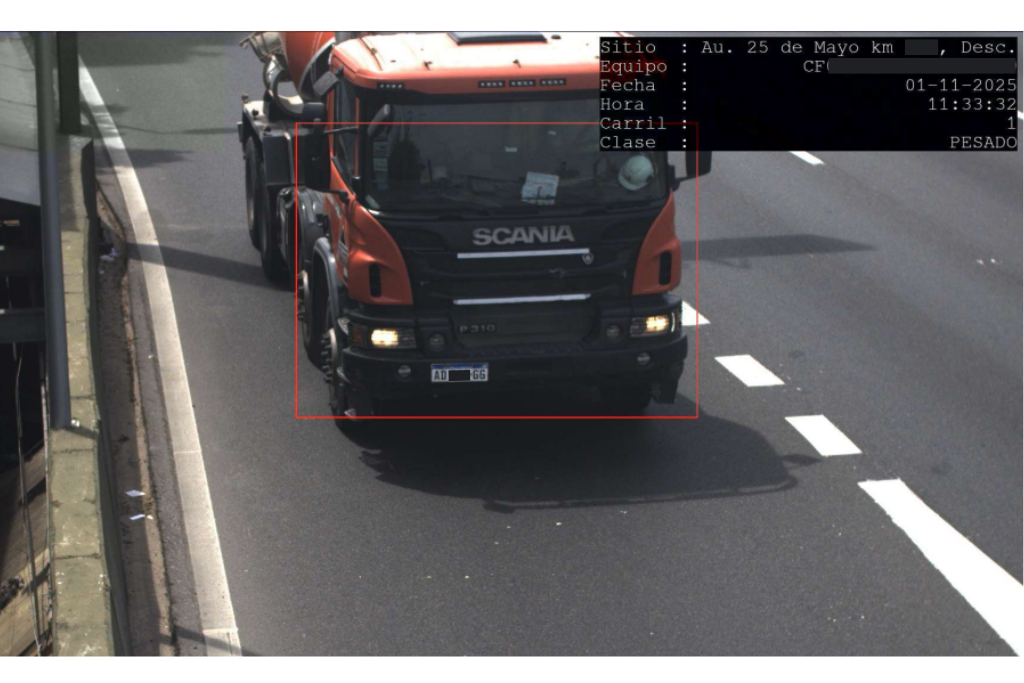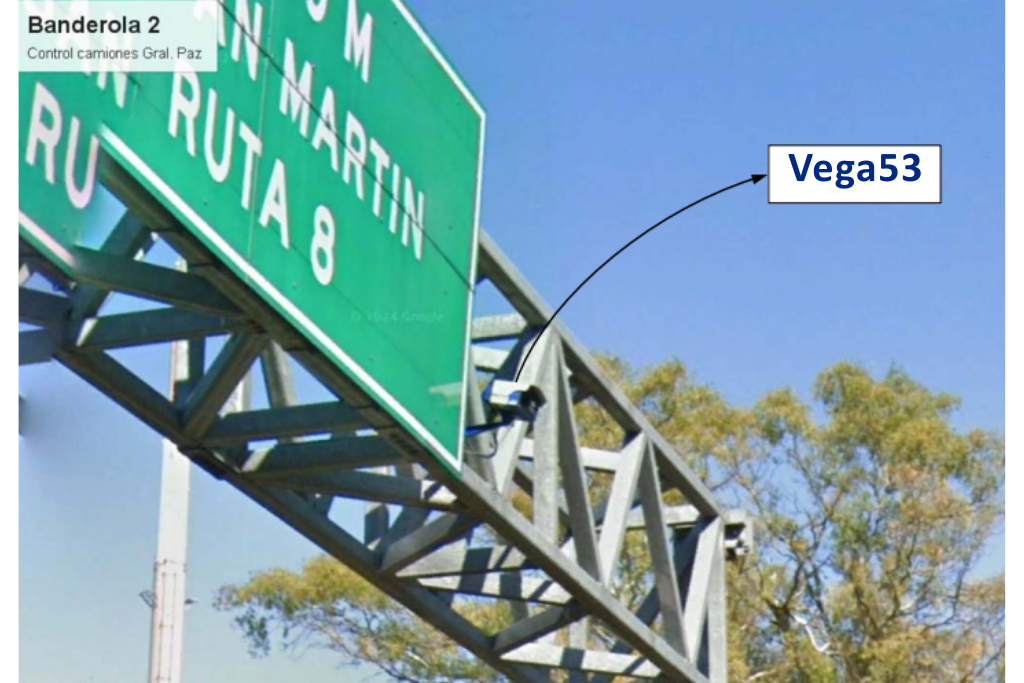When the city of Buenos Aires sought to regulate heavy-vehicle traffic on the exclusive lanes of Avenida General Paz, the goal was clear: to ensure compliance, reduce congestion and gather reliable traffic data. This initiative is part of a broader strategy implemented by the Autonomous City of Buenos Aires, which includes eleven enforcement points across major highways and access roads. These sites were specifically selected because they handle both light vehicles and heavy trucks, whose circulation is restricted to designated lanes.
To achieve this, the city selected Tattile Vega53, our smart camera designed specifically for ALPR (Automatic License Plate Recognition) and vehicle analytics: the system plays a key role in monitoring trucks that use the two slow lanes.
Tattile’s solution: ALPR camera Vega53
One of the main reasons Vega53 was the right fit for this project is its ability to work independently. This camera processes information directly on board: it detects vehicles, it reads license plates and it classifies the type of vehicle in real-time.
The city’s new automated system replaces manual inspections with continuous, fully electronic enforcement, improving road safety and ensuring compliance with Argentina’s traffic law, which requires heavy vehicles to remain in the rightmost lane and use the second lane only for overtaking. The Buenos Aires installation showcases the camera’s ability to deliver high-quality automatic license plate recognition results even in challenging conditions. Whether under full sunlight, at dusk or during the night, Tattile’s Vega53 captures high-definition license plate images thanks to its built-in infrared illumination. Alongside the OCR image, a color context picture provides a full view of each vehicle, giving operators all the details they need for verification.
Each detection includes essential information such as date, time, lane, license plate number and truck classification.

The installation in Buenos Aires utilizes a series of filters in the output configuration, designed to register exclusively heavy-vehicle events. Thanks to Vega53’s real-time classification capabilities, the camera automatically distinguishes trucks from cars, motorcycles and other vehicles. This selective event filtering, available onboard thanks to the Stark platform, prevents the central platform from being overloaded with thousands of irrelevant detections generated by vehicles circulating lawfully. By transmitting just a small subset of all daily transits, the system maintains high performance even with a simple 4G/LTE connection. This approach still manages to track 40,000 to 50,000 daily transits and detects the 200 to 400 heavy trucks that pass through the monitored lanes every day.
With this new system, Buenos Aires joins the group of cities that are committed to technology to manage the complex coexistence of light and heavy vehicles. The results will be measured in the coming months, but the initial commitment is clear: fewer risks on highways and smoother traffic for millions of daily users.
Beyond its employment in Buenos Aires, Tattile’s Vega53 is widely used in free-flow tolling, traffic enforcement and smart mobility applications. With options to recognize vehicle brand, class, color and model, and with flexible integration through a standard REST API, it adapts easily to a variety of city and highway environments.
Vega53 Q&A
Q: How many lanes can one Vega53 camera monitor?
A: It can monitor up to two lanes, depending on the installation site.
Q: Does Vega53 support vehicle classification beyond automatic license plate recognition?
A: Yes. Optional allows for recognition of vehicle brand, class, color and model.
Q: Does Vega53 work at night?
A: Yes. Thanks to its infrared illumination, it ensures reliable plate reading 24/7.
